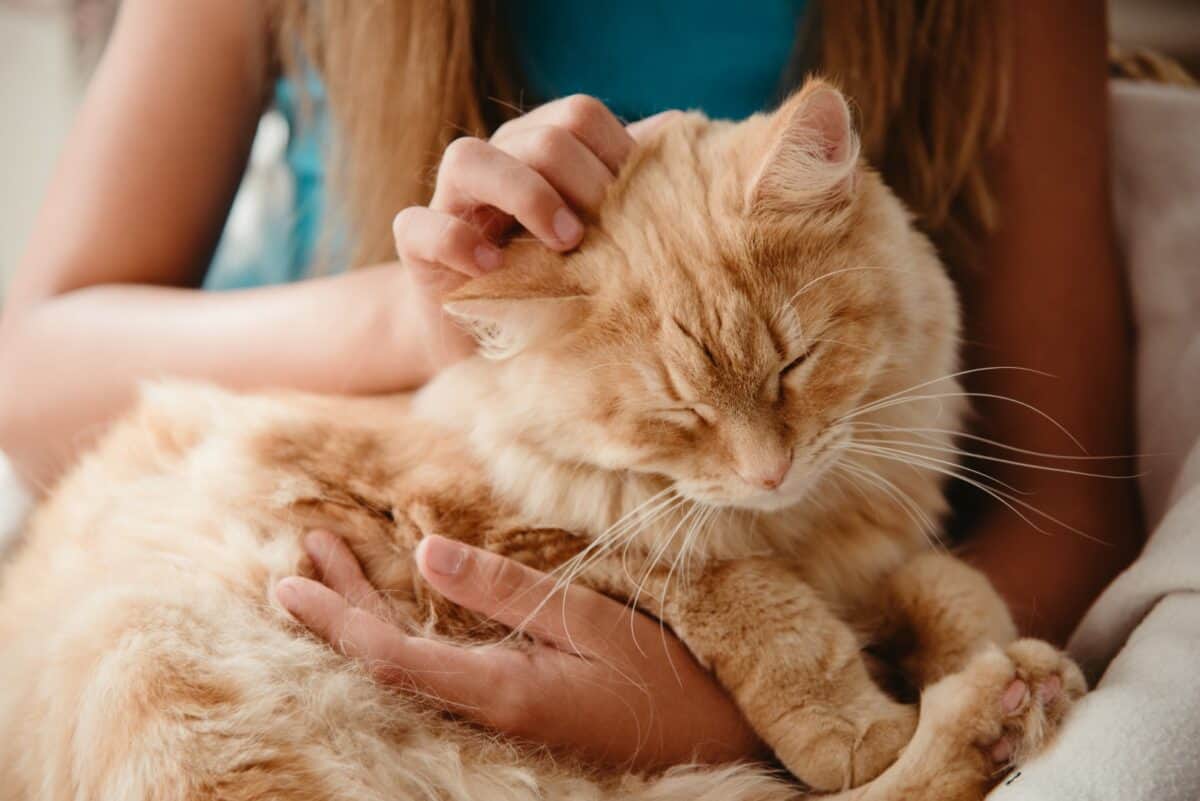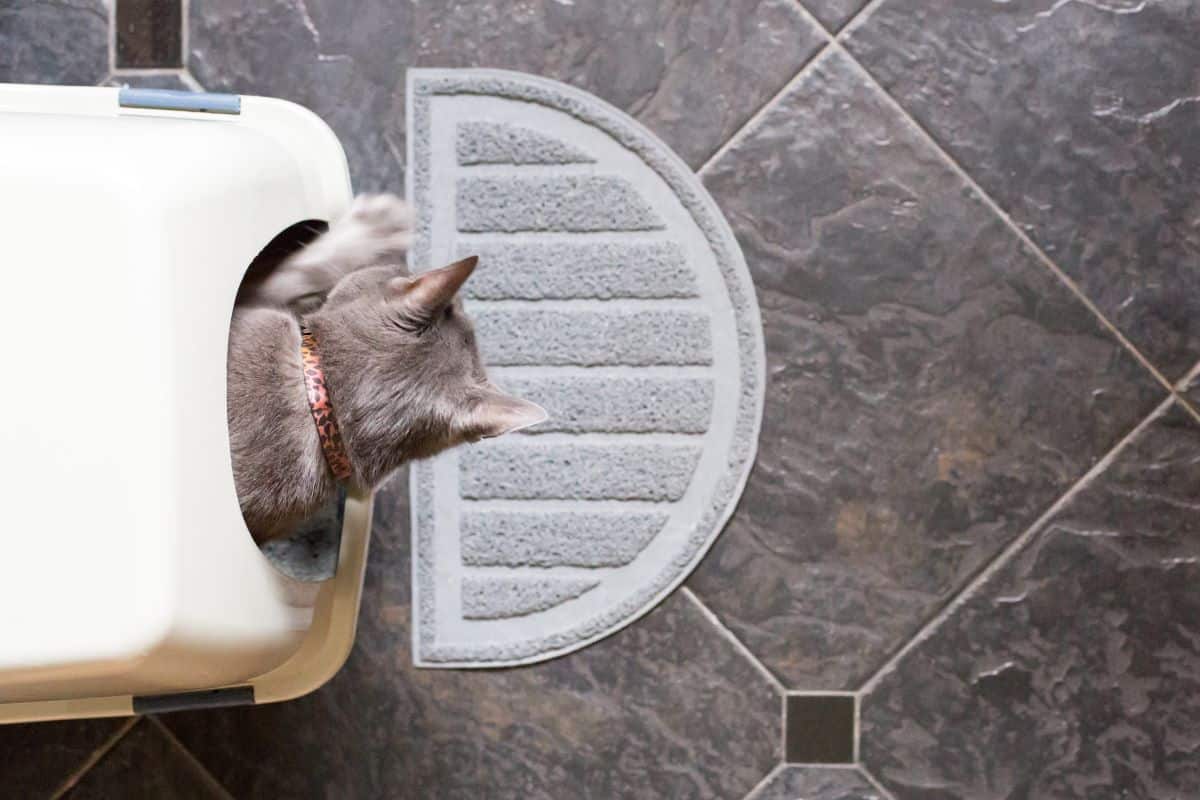When you are faced with problem behavior in your cat, it's easy to become frustrated or even despairing.
However, it's important to remember that our feline friends do not act out of malice or spite. Instead, their behaviors are typically driven by natural instincts, needs, or stress responses.
The good news is tackling these behavior problems systematically and effectively is possible.

Understanding why your cat behaves the way it does is the first step.
This comprehensive guide offers a 5-step method to address and resolve behavior problems in your cat.
It will provide you with the tools to understand, address, and modify your cat's behavior, allowing for a happier, more harmonious relationship between you and your furry friend.
Let's take a close look at each of these steps.
1. Find out if this is a common kitty behavior
The first order of the day is to understand the behavior.
More often than not, the behavior is perfectly normal for a cat. Here are some examples -
- Scratching objects in our home is a natural behavior for any cat.
- Biting the hand that reaches out to her during playtime is just what any kitten would do.
That does not mean you have to accept bite marks on your hands or ruined couches. Understanding the behavior helps you understand the motivation or need behind it. Providing a suitable outlet for that need would be the first step towards fixing the problem.
What if this isn't a typical feline behavior?
Not all behaviors fall under the "this is what cats do" category.
For example, peeing outside the litter box should not be happening. If this is what's happening, there's cause for concern.
You're going to have to check for medical problems first, and then employ various techniques to get your cat to revert to employing that natural cat instinct of using the litter.

Not sure if your cat's behavioral issue is normal feline behavior, a developmental stage, or an actual problem? Visit our cat behavior articles section and learn more on the topic, or visit our cat behavior forum and ask.
2. Work with Your Veterinarian
If your cat appears to have a behavior problem, consider medical issues. Check out our list of 35 things that may be a sign that your cat in pain. You'll notice that most of these are behavioral.
Your vet should rule out any physical problems before you can move on to address behavioral ones.

While many vets are not experts on feline behavior, they can often refer you to a behaviorist and help with stress-reducing medications as a temporary measure during behavior modification or a permanent solution.
Read more about Anti-Anxiety Medication for Cats.
3. Provide Solutions
You can't teach your cat to behave in a certain way unless you address the root cause of the behavior. In the case of litter box issues, for example, you should use our guide to How To Stop Your Cat From Scratching The Furniture.
Remember, solutions and alternatives always come before correcting the behavior.
4. Use Positive Reinforcement Techniques
Positive reinforcement using praise and treats may work depending on the type of behavior you're dealing with. Specific techniques are described in our various cat behavior guides and articles.
Stay calm, and positive
Whatever your cat is doing, don't lose your temper. Cats do not do things "for spite" or out of vengeance. They are incapable of such complex motivations.
Your cat is doing what she's doing either because she is physically ill or because one of her basic needs isn't met. That's it. So don't get angry, and don't take this personally.
Before we talk about the 5th - and potentially most important - step, let's take a quick look at what not to do when faced with a cat behavior problem.
What Not to do when your cat has a behavior problem
Unfortunately, when facing what they consider to be a problem behavior, some owners try to punish the cat.
They assume that the cat will somehow understand what he or she is doing "wrong" and change their ways. This isn't how modifying cat behavior works.
With that in mind, we wanted to cover the "Don't's" of cat behavior modification too.
Don't ever hit or otherwise physically hurt your cat
Hitting or hurting your cat is pet abuse, plain and simple. It achieves nothing except distrust and potential stress-related problems.
Don't punish your cat
Cats don't understand the concept of punishment. Withholding food, confining a cat to a room, or any other method of punishment is a recipe for stress and stress-induced problems.
It is possible to use confinement to a room as a way to allow the cat to calm down in a stimuli-free environment, but it should never be used as punishment.
Avoid shouting at your cat
Shouting can make a nervous cat even more nervous and more prone to behavior problems. Annoyed as you may be, avoid shouting at or near a cat.
Don't use spray bottles or air-pressure cans
These are likely to startle and scare nervous cats and cause more problems. Moreover, they make the cat associate you - the owner - with something scary and unpleasant.
Read more: 5 reasons to never spray your cat with water.
Don't Declaw
Declawing is not a solution to either furniture clawing or aggressive behavior.
It is a painful procedure that could potentially cause more behavior problems down the road.
Read more about declawing here - Declawing and Alternatives
The 5th Element: Patience
When a cat doesn't behave in the way you expect them to, it can be extremely frustrating.
It's up to us as responsible pet owners to overcome the frustration and work on fixing the problem.
Fortunately, cat experts have developed many useful techniques to help owners solve cat behavior problems.
But here's the rub: Techniques are often not enough. You also need generous amounts of the magic ingredient:
Patience.

Why patience is so important
Cats are creatures of habit.
Behavioral problems often mean a troublesome habit has been formed. Breaking that habit will involve making some changes that will address the underlying cause. Next, some amount of re-training may be required as well.
And that takes time.
During that time, you will probably need to create positive associations with the desired behavioral pattern (and possibly negative associations with the old pattern).
Changing habits takes time simply because learning takes constant and consistent repetition, above everything else.
You will also have to reduce the overall amount of stress in your cat's life. Remember, stress can make any behavioral problem worse.
If you get frustrated, you're far more likely to shout at your cat, groan and moan and otherwise show signs of anger. Your cat will pick up on that, and chances are it will stress him or her. This, in turn, can result in making the behavioral problem worse. Your own stress levels can affect your cat.
You may be asking yourself how it is possible to keep patient while your cat avoids the litterbox or is otherwise misbehaving?
The key here is to understand that Kitty is not trying to aggravate you.
He or she is not out there taking revenge on you or trying to do something "for spite." Your cat could be ill, stressed, disoriented, or unclear about how to "be a cat" in your home.
Follow These 5 Steps, And your Chances of Solving The Problem Increase
Dealing with cat behavior problems requires patience, understanding, and a systematic approach.
Your cat is not behaving in a certain way to annoy you or out of spite. Rather, it may be dealing with an underlying issue or simply following its instincts.
Providing alternatives, using positive reinforcement, consulting with your vet, and, most importantly, being patient can bring about change.

Remember that some behaviors are deeply ingrained and may take time to alter. Avoid punishment or negative reinforcement, as these can exacerbate the situation and cause more stress for your cat.
Instead, provide love, care, and a supportive environment to encourage your cat to behave as you desire. Your bond with your cat can only grow stronger through this process, resulting in a happy and well-adjusted feline companion.
Remember, the journey to resolving behavior problems in cats is a marathon, not a sprint. Be patient, be consistent, and the results will follow.
Comments? Leave them using the form below. Questions? Please use the cat forums for those!
Note: We may get commissions for purchases made through links on this page.



